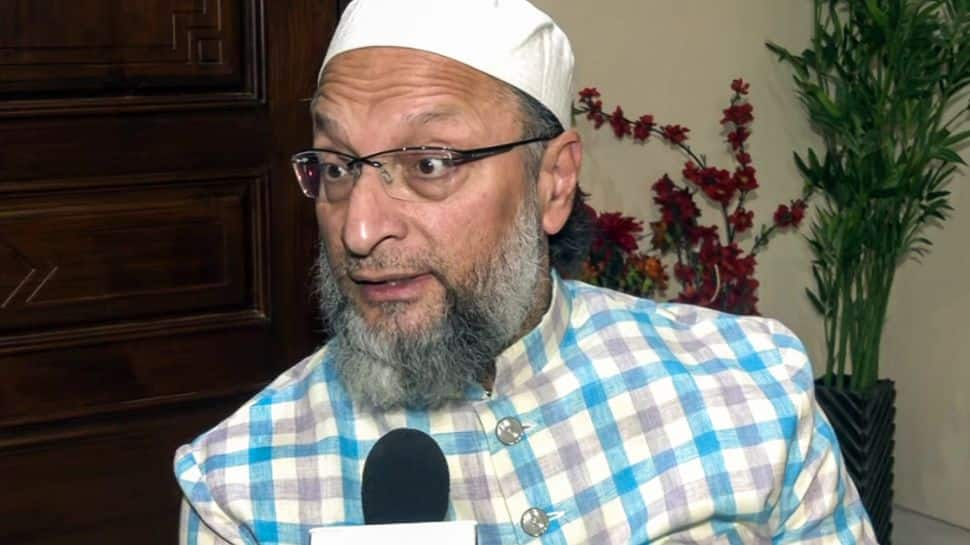Operation Sindhu: Fear, flight, and an uncertain future
In New Delhi’s Indira Gandhi International Airport, Suhail Qadri, 57, paces nervously in front of an ‘arrivals’ gate as he waits for his two children — Imroz Qadri, 20, and Raiban Qadri, 23 — to land from conflict-torn Iran. When he finally sees them, quietly exiting from another gate to avoid the glare of cameras, his face lights up with relief. The brother and sister drop their luggage and run into his arms in a dimly lit corner.
Imroz and Raiban are students of the Tehran University of Medical Sciences in the capital of Iran. Suhail, a resident of Srinagar in Jammu and Kashmir (J&K), says he had lost touch with them from the fifth day of the conflict that broke out between Israel and Iran on June 13.
Indian students evacuated from Iran amid Israel-Iran conflict
| Video Credit:
The Hindu
“For the last two days, I have been glued to my phone, waiting for an international number to pop up on my screen. I was hoping that the caller would either be my children or an embassy official telling me where they are,” he says.
In J&K, every fifth house has a child pursuing an MMBS degree in Iran, explains Suhail. When news first broke about heightened tensions between Iran and Israel, Suhail and some of his neighbours quickly reached out to their children.
The students were not perturbed at first. They became alarmed only when they began to spot missiles. “Imroz called to say Israeli bombs had hit Tehran on June 13,” he says. “They saw many missiles and got messages on WhatsApp that two Kashmiri students were hurt.”
A student from Iran’s Urmia University hugs her mother at the airport in Delhi.
| Photo Credit:
Shashi Shekhar Kashyap
On June 13, the Israel Defense Forces (IDF) instructed people in Tehran’s District 18, which includes military buildings and residential neighbourhoods, to evacuate. When the IDF launched the attack on Iran’s capital, several residential buildings and university complexes were impacted. Following this, the Indian Embassy in Iran posted on X that Indian students had been moved out of Tehran. The Embassy requested other residents with access to transportation to leave the capital too.
On June 18, the Indian government launched Operation Sindhu to evacuate Indian nationals first from Iran and then from Israel as well. Imroz and Raiban were two of the 160 people evacuated and flown directly to India on June 20. So far, under the mission, India has evacuated more than 1,400 Indian nationals from Iran and more than 1,100 from Israel.
Missiles in Iran
When the attack began, Imroz recalls sitting inside the women’s dormitory room with her friends. “We were having a sleepover when we heard a thud. We thought crackers were being burst. But when the noise continued, we realised that there was an attack,”she says.
Also read: ‘There were sounds of sirens and distant explosions every day’
Minutes later, Imroz and her friends, who had been following the news on the tense situation in West Asia, realised that the street in front of their dormitory had been bombed by the Israelis. Panic stricken, they rushed to the basement and huddled around the guards trying to understand what they should be doing next.
Hania, 23, a fourth year MBBS student at the Tehran University of Medical Sciences, saw the Israeli air strikes hit the university complex. “The bomb dropped on the men’s dormitory and the glass windows broke. Shards of glass injured at least two Indian students in the dorm,” she says over a call from Qom, about 160 kilometres away from Tehran, while waiting to be evacuated.

Hania says the Indian Embassy contacted Indian students in Tehran and asked them to relocate to Qom, a relatively safer city. Many students chose to move out in buses provided by colleges. Some, like Hania, booked private cabs. “There was no time to pack properly, so I left with my documents, some clothes, food, and some cash lying around,” says Hania, who is also from J&K.
Tamheed Mughal, a third year student at the same university, says he has lived in a conflict zone (J&K). “But when I found myself in another country hearing the incessant sound of bombing, I began palpitating. My anxiety got worse when the U.S. entered the war,” he says. Some of his peers have heard that the university will be holding a meeting on June 30. This, he thinks, may help him decide his future course. Tamheed is keen to go back and complete his degree.
A Kashmiri who was studying in Iran at home with his mother in Srinagar.
| Photo Credit:
Imran Nissar
Iran’s Health Ministry claims that 224 people have been killed so far in the conflict.
Accustomed to conflict
Indian nationals enrolled as students in Israeli universities say they had become accustomed to the stress of being at the centre of a conflict zone even before the latest round of attacks began between Iran and Israel.

Sreyashi Bhowmick, 31, a postdoctoral student enrolled with the Tel Aviv University, says, “Whenever Israel senses an attack coming its way, the civil defence force warns us of a possible attack from another country. The sirens then go off and we are expected to rush to the nearest bunkers or bomb shelters.”
Sreyashi had earlier been evacuated in October 2023, under India’s Operation Ajay, launched in response to the conflict between Israel and Gaza. She went back in February 2024, to continue work at the Geological Survey of Israel.
“It is exhausting to be on alert always,” says Sreyashi. “It is bound to take a toll on your mental health, especially when you are living on your own, but the government here is very organised regarding wartime protocol,” she adds.
Also read: Operation Sindhu: Special flights bring more Indians home from Iran and Israel
On the evening of Israel’s attack, when Iran hit back, Sreyashi was alone in her apartment. “It was the middle of the night when messages started coming in, asking us to move to bunkers and bomb shelters. But to do that, I had to step out alone and walk to my landlady’s house, since my apartment does not have any bunkers. So I decided to stay put,” says the student, who hails from Kolkata in West Bengal. Sreyashi, who is still in Israel, says, “If something drastic happens, the Indian Embassy will arrange for our evacuation.”
Another postdoctoral student from Weizmann Institute of Science in Rehovot, about 20 km from Tel Aviv, says panic had not set in until missiles hit his university. “Everyone living here told me that they had seen missiles being constantly launched and intercepted. Only when my university was hit did I realise that I was living in a conflict zone,” he says.
He has been living in Rehovot for more than a year. About his decision to study in Israel, which is already at war with Gaza, he says, “I was aware that Israel was at the centre of a geopolitical conflict, but since it is so invested in scientific research, it seemed like a good choice.” He reached Delhi after U.S. President Donald Trump declared a ceasefire on June 23 between the warring nations and is now home in Kolkata.
Living with worry
During the early hours of June 19, a flight with 110 students from Iran’s Urmia University landed in New Delhi. Like many others, Nargis, 22, a resident of Mumbai, Maharashtra, was in the midst of her semester exams when she was given a few hours’ notice to leave. With just a cabin-sized bag, she travelled from Urmia to Qom and then to Yerevan in Armenia and then to Doha before finally reaching home.
After spending 52 hours in transit, Nargis is elated to be in India, but she is also worried. Wiping beads of sweat off her forehead, the second year MBBS students says with a faint smile that she is hoping for stability in Iran soon.
“I took a loan to pursue an MBBS degree there,” she says. “Many of us chose to pursue an MBBS degree in Iran because the tuition fees is far lower than in private medical colleges in India. A mediocre private medical college in India costs a minimum of ₹1 crore. In Iran, we can complete the same degree by paying ₹30 lakh without compromising on the rigour of education.”
Editorial | Strategic misfire: On the Israel-Iran conflict
Sitting inside an apartment in a colony in Sultanpuri, Delhi, Aman, 21, a first-generation medical student in his family, is anxious. “Going by conversations on WhatsApp groups, several universities in Iran might open up for local students in a couple of weeks, but the university is yet to share any information with international students,” he says.
Aman says if he is unable to go back, he may not be able to complete his foundational degree. “Universities in Iran have tie-ups with other foreign universities, but the National Medical Council of India does not take cognisance of medical degrees from every other country. This degree is the only way my family and I can climb the societal and financial ladder,” he adds.
Imroz left Iran during her semester exams. She spends all her time chatting with worried friends on WhatsApp and following the news. “We have not received a single notification from our university about when our classes will resume, so my brother and I have no clue what lies ahead,” she says. Imroz has left all her books and notes in Iran, so even if she is asked to study online, she believes it is going to be a challenge.
The parents of these students are equally worried. Md. Kachakkarel, 55, from Malappuram in Kerala, has spent nearly all his savings to educate his youngest daughter. “I have spent more than ₹45 lakh for her degree and stay in Iran,” he says. “If she cannot complete her degree, what was the point of my working in the Gulf for 25 years?”
Kachakkarel went to work at construction sites in Saudi Arabia to save enough to fund the education of his three daughters. “I saved every penny doing manual labour to ensure that my children could pursue higher education, which I could not. My youngest daughter has come back from Iran. The older two had to live through extreme stress while pursuing medical degrees from Russia, which is at war with Ukraine,” he says.
While Indian students from Iran are unsure about when they can go back, those studying in Israel are more certain that they will be able to go back soon. The postdoctoral student studying in Israel says considering how prepared the country seems to be in dealing with emergencies, he is certain that things will get better soon and he will be able to resume his research.
A sense of déjà vu
Reports and videos of students deplaning after being evacuated from Iran and Israel with nothing but backpacks and small trolleys brought back many unhappy memories for Dr. Jeetender Gaurav. The 30-year-old resident of Patna, Bihar, was one of the many students evacuated from Ukraine in 2022. He was relieved then, but that warm feeling quickly turned into fear as the situation in Ukraine worsened with time.
When war broke out between Russia and Ukraine in February 2022, nearly 18,000 Indian medical students were evacuated from Ukraine under the Indian government’s Operation Ganga. Among them were several students pursuing an MBBS degree. Following petitions from the students who had returned, the Central government committee recommended to the Supreme Court that the medical students be allowed to take the final MBBS exams in two attempts, according to the existing National Medical Council syllabus and guidelines. The Court agreed. Once they passed the exams, the students were required to complete a compulsory rotatory internship. The government clarified that this was an exception and would not set a precedent for the future.
Those who had not finished their five-year course and chose to stay in India had to either take the National Eligibility-cum-Entrance Test to redo their medical degrees or explore other career options. Ukraine universities also offered to help students migrate to other foreign universities to complete their degrees.
Some Indian students went back to Ukraine to finish their medical degrees. Jeetender, who had been pursuing a degree from Ternopil National Medical University and was in his third year, was one of them. He says his university was offering a transfer to universities in Kazakhstan, Kyrgyzstan, Uzbekistan, Afghanistan, and Georgia. But since a medical degree from these countries was not valid in India, many students waited and eventually went back to Ukraine.
But on reaching Ukraine, the students realised that the situation was much worse than what they had imagined. After nearly eight months of continuous conflict, they were hit by skyrocketing inflation. Electricity supply, too, was limited.
“Russia had hit most of the major power grids, so we would get only two hours of electricity a day. For the rest of the day, we had to manage with candles. Our phone batteries would die often,” recalls Dr. Jeetender. While those like him, who went back and completed their degree, are now expected to clear the Foreign Medical Graduate exam and complete a year’s internship, many who chose to pursue the last leg of their degree online are expected to take the same exam and follow it up with at at least two or three years of internship before getting a licence to practise.
Dr. Jeetender says that unless the universities in Iran open their doors again for students, the road ahead will be as rocky as it was for him and his peers. “The low availability of seats in Indian medical colleges makes it impossible for stranded students to be absorbed in,” he says.
(With inputs from Bindu Shajan Perappadan)






